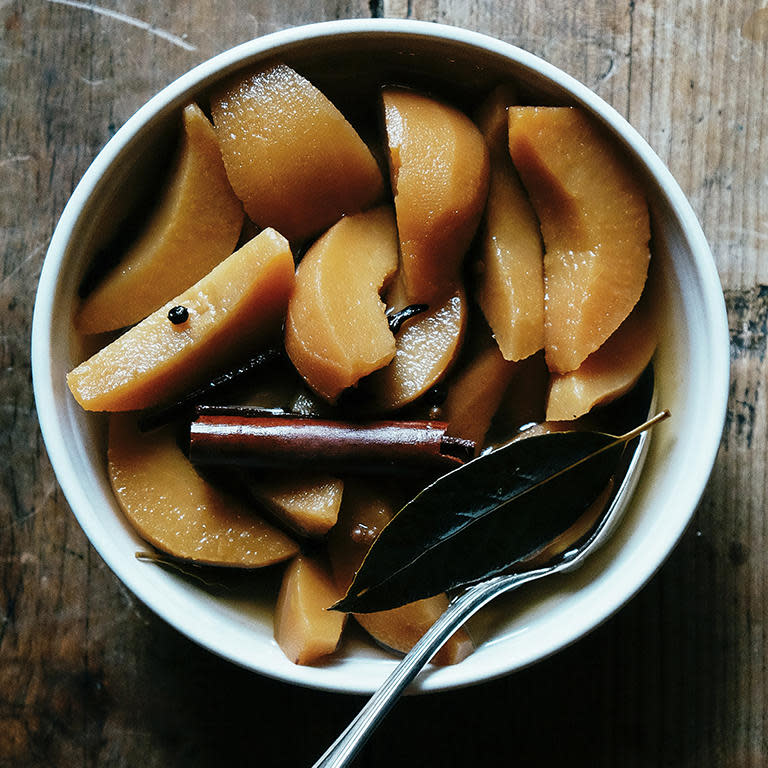What the Heck Is Quince—And What Can You Do With It?
Though it has a unique flavor and rich history, quince (pronounced “kwins”) is a relatively unfamiliar fruit to most people—and we think that’s a shame.
What Is a Quince?

A quince is a lumpy, pear-shaped fruit that is closely related to both apples and pears. When it’s ripe, the color is similar to that of a Golden Delicious apple. Uncooked quince is extremely hard and almost inedible. If you find one that’s soft, it’s likely rotten.
So why should you bother with an ugly, hard-to-deal-with fruit? When you get past its rather unappealing characteristics, quince is a delightful surprise: Its flavor is delicately sweet when stewed, and its aroma is reminiscent of vanilla and oranges. When cooked, the fruit’s pale yellow color changes to a lovely rose.
You can find quince in stores and farmers’ markets beginning in late October through December. Look for quince that’s bright golden-yellow, firm, and smooth.
Quince History

The history of the quince is almost as old as history itself. Quinces were cultivated well before apples. In fact, many experts speculate that ancient references to apples were actually references to quinces. The apples in the Song of Solomon and the Forbidden Fruit in the Garden of Eden may not have been apples at all, according to this theory.
In Ancient Greece, quince was associated with love and fertility. It was Aphrodite’s favorite fruit, scholars say, and Greek brides chewed on a piece of quince before entering the bridal chamber.
The quince’s influence spans centuries and cultures: Monarchs and aristocrats of the Middle Ages ate it at feasts, Romans used it as perfume, and it was prized for its medicinal values in the Middle East.
Quince Health Benefits

A great source of vitamin C, calcium, iron, potassium, magnesium, and copper, quince is high in nutrients and low in calories. It’s also chock-full of dietary fiber, antioxidants, vitamins, and minerals.
How to Cook Quince

Quince is all but useless before it’s cooked. To get the most of the fruit, it must be peeled, sliced, and stewed with sugar and other flavorings. For specific instructions, find our Poached Quinces recipe here.

